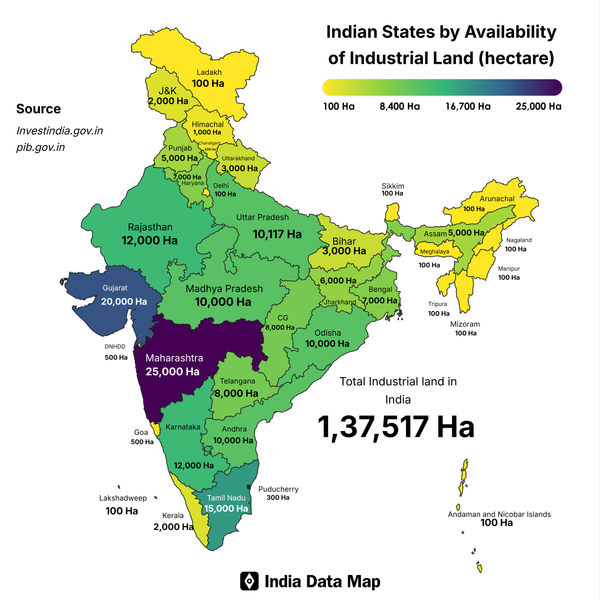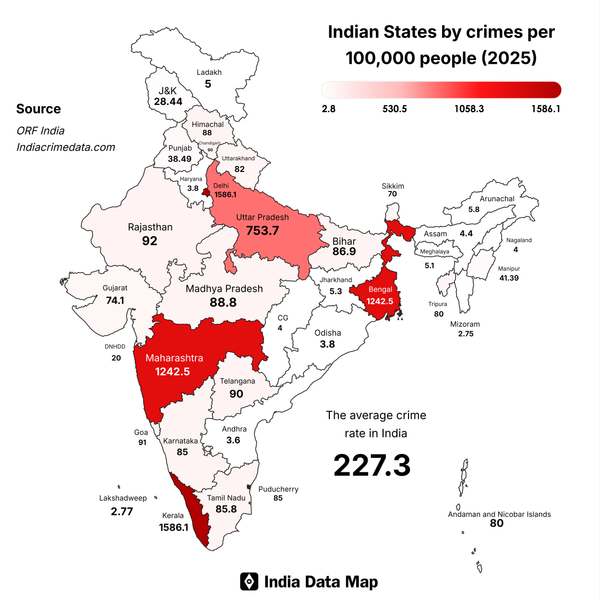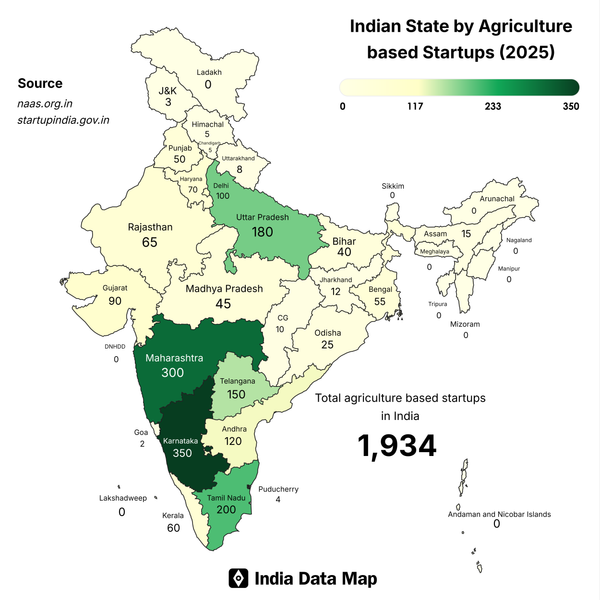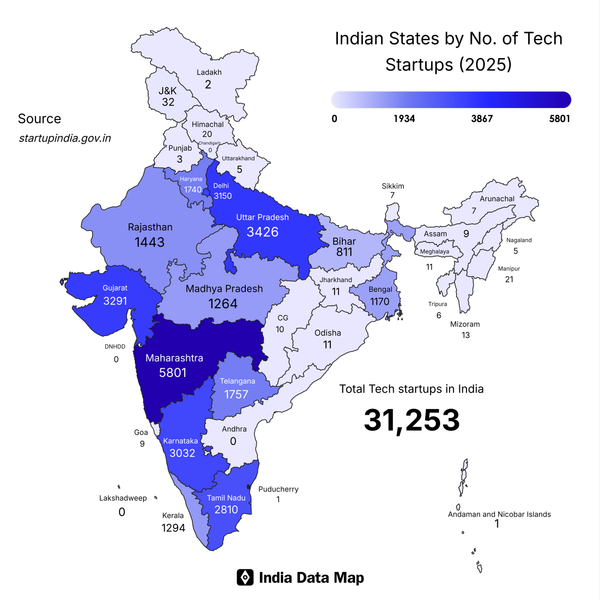Map: Indian States by Special Economic Zones (2025)
Discover India's SEZ landscape: Tamil Nadu leads with 51 zones, followed by Telangana & Maharashtra. Explore state-wise rankings and key insights.
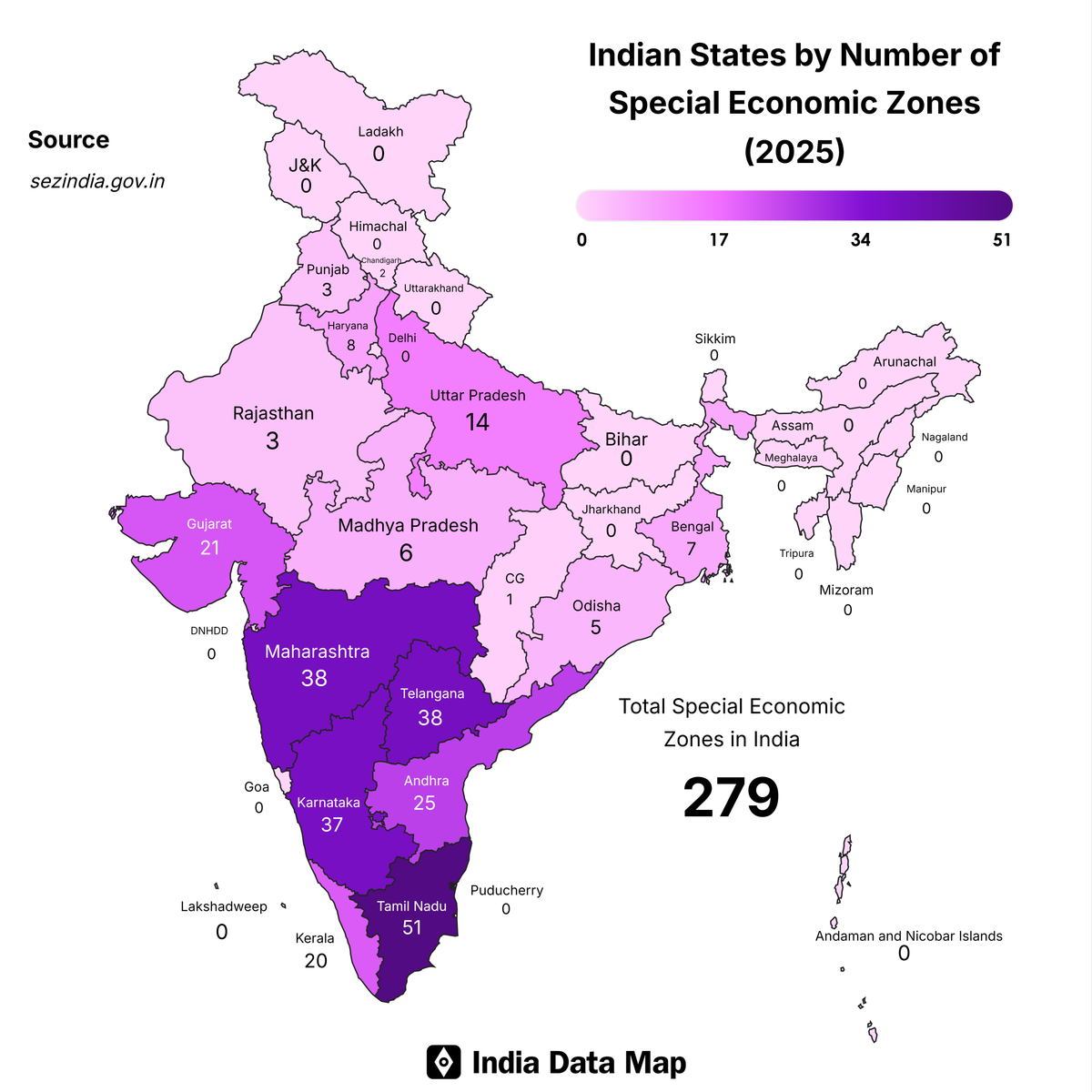
India's Special Economic Zones (SEZs) play a crucial role in promoting export-driven growth, drawing in investments, and encouraging industrial advancement.
As of the latest data, there are 279 operational SEZs throughout the nation, providing tax benefits, top-notch infrastructure, and simplified regulations.
This blog post explores the distribution of SEZs by state, revealing important facts and fascinating insights into India's economic environment.
| State/UT | Operational SEZs |
|---|---|
| Tamil Nadu | 51 |
| Telangana | 38 |
| Maharashtra | 38 |
| Karnataka | 37 |
| Andhra Pradesh | 25 |
| Gujarat | 21 |
| Kerala | 20 |
| Uttar Pradesh | 14 |
| Haryana | 8 |
| West Bengal | 7 |
| Madhya Pradesh | 6 |
| Odisha | 5 |
| Punjab | 3 |
| Rajasthan | 3 |
| Chandigarh | 2 |
| Chhattisgarh | 1 |
| Arunachal Pradesh | 0 |
| Assam | 0 |
| Bihar | 0 |
| Goa | 0 |
| Himachal Pradesh | 0 |
| Jharkhand | 0 |
| Manipur | 0 |
| Meghalaya | 0 |
| Mizoram | 0 |
| Nagaland | 0 |
| Sikkim | 0 |
| Tripura | 0 |
| Uttarakhand | 0 |
| Andaman & Nicobar Islands | 0 |
| Dadra & Nagar Haveli and Daman & Diu | 0 |
| Delhi | 0 |
| Jammu & Kashmir | 0 |
| Ladakh | 0 |
| Lakshadweep | 0 |
| Puducherry | 0 |
Tamil Nadu: The SEZ Powerhouse
At the forefront, Tamil Nadu features 51 operational SEZs, establishing itself as India’s premier location for these specialized zones.
The state’s strong infrastructure, its closeness to ports such as Chennai, and its flourishing sectors including IT, automobiles, and textiles render it an attractive option for investors.
Tamil Nadu represents more than 18% of India’s SEZs, highlighting its leadership in export-oriented industries.
Telangana and Maharashtra: Neck-and-Neck
Telangana and Maharashtra, each possessing 38 SEZs, are tied for the second position. The ascent of Telangana, propelled by the IT and pharmaceutical hubs in Hyderabad, signifies its rise as a technological powerhouse.
Maharashtra, with its industrial hubs in Mumbai and Pune, excels in IT, manufacturing, and financial services. Collectively, these two states account for nearly 27% of the total SEZs, emphasizing the concentration of economic activity in southern and western India.
Karnataka and Andhra Pradesh: Strong Contenders
Karnataka, with 37 SEZs, ranks closely behind, driven by Bengaluru’s global reputation in IT and advancements in aerospace.
Andhra Pradesh, with 25 SEZs, capitalizes on its coastal benefits and the Visakhapatnam port to bolster industries such as pharmaceuticals and aquaculture.
These states, along with Gujarat (21 SEZs) and Kerala (20 SEZs), constitute a formidable southern bloc, hosting over half of India’s SEZs.
Emerging Players and Gaps
Uttar Pradesh (14 SEZs) and Haryana (8 SEZs) exhibit potential in northern India, with Uttar Pradesh gaining advantages from its e-auction system and its proximity to Delhi-NCR.
Conversely, states such as West Bengal (7 SEZs), Madhya Pradesh (6 SEZs), and Odisha (5 SEZs) reveal unexploited opportunities. Notably, 20 states and Union Territories, including Assam, Bihar, and all northeastern states, report no operational SEZs.
This deficiency, particularly in the Northeast, underscores challenges such as limited connectivity and geographical constraints, although initiatives like the Northeast Corridor may stimulate future development.
Key Observations
Southern Dominance: Tamil Nadu, Telangana, Karnataka, Andhra Pradesh, and Kerala together accommodate 171 SEZs (61% of the total), propelled by excellent infrastructure, a skilled workforce, and access to ports.
Sectoral Strengths: SEZs correspond with the strengths of the states—IT in Karnataka and Telangana, manufacturing in Maharashtra and Tamil Nadu, and pharmaceuticals in Andhra Pradesh and Gujarat.
Northern Potential: Uttar Pradesh’s 14 SEZs indicate its growing industrial aspirations, which may pose a challenge to southern dominance as infrastructure continues to improve.
Northeastern Absence: The absence of SEZs in the Northeast emphasizes logistical challenges, yet niche sectors such as handicrafts and agro-based industries could foster future SEZ growth.
Policy Impact: States with proactive policies, such as Tamil Nadu’s SEZ-friendly regulations and Gujarat’s GIDC support, attract a greater number of zones, highlighting the significance of governance in economic advancement.
Conclusion
India's 279 active Special Economic Zones (SEZs) exemplify its aspiration to establish itself as a global center for manufacturing and exports.
Although Tamil Nadu, Telangana, and Karnataka are at the forefront, developing states such as Uttar Pradesh exhibit potential. The lack of SEZs in areas like the Northeast highlights the necessity for focused infrastructure investments.
As India progresses in refining its SEZ policies through initiatives like the SEZ India portal, the allocation of these zones is expected to change, addressing regional imbalances and creating new economic prospects.

